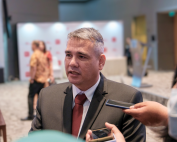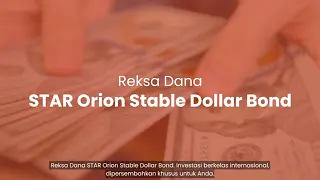
STAR Insight, Market Update 14 Juni 2021
Bond yield decoupled from inflation
- US equity mixed; bond yield dropped despite high inflation
- G7 agrees for 1 billion COVID vaccines donation
- Foreign inflow to Indonesian stock and bond continues
Bond yield dropped despite higher than expected inflation
US inflation recorded at 5% YoY in May ‘21, higher than the market expectation of 4.7% and higher than 4.2% recorded on Apr’21. US May inflation is also significantly higher than The Fed’s inflation target of 2.0%. May inflation reached 0.6% MoM, higher than the market expectation of 0.4% (Fig. 1). Nonetheless, the S&P 500 rose by 0.19% on Friday following the inflation data release, resulting in a 0.4% increase for the week. On the flip side, bond price slightly corrected with US 10Y treasury yield increased 2bps on Friday, following higher than expected inflation data which was being released on Thursday. However, with the prior decrease of around 12 bps, the US 10Y Treasury yield remained 10.1 bps lower than the previous week. Ample liquidity in the bond market is one of the reasons behind this unsynchronized movement between inflation and bond yield, in our view.
G7 agrees 1 billion vaccines donation for poorer countries by 2022
G7 countries will provide 1 billion COVID-19 vaccine doses over the next year and work with the private sector, the G20, and other countries to increase the contribution over months to come. The G7 stated that the vaccine donations built on exports from domestic production with at least 700 million doses exported or to be exported this year, of which at least 50% have gone to non G7 countries. UK Prime Minister stated after the meeting that the G7 leaders had pledged to supply the vaccines to poor countries either directly or through the World Health Organization’s COVAX scheme – including 100 million from the UK. This commitment will be positive for emerging countries that have limited access to the Covid-19 vaccine. However, we see the timeline for vaccine distribution to EM and poor countries would take more than 12 months, hence, we still see the potential of un-synchronized economic recovery globally.
Another foreign inflow to Indonesia equity and bond market
JCI increased 0.5% last week, testing the technical resistance level at around 6,090. Technology (+35.9%), Transportation & Logistic (+6.1%), and Energy (+3.5%) sectors were leading JCI’s positive performance last week while the Healthcare sector (-2.6%) was the weakest. Foreign investors recorded a net buy of Rp475bn in the regular market last week (vs. Rp2.5tn net buy last week). The highest inflow came to BBCA (Rp590bn), TLKM (Rp539bn), and ARTO (Rp333bn).
Indonesia’s 10Y government bond yield decreased by 7.4 bps while the spread to US 10Y treasury yield expanded to 4.84%. Indonesia’s government bond market enjoyed a Rp9.95tn foreign inflow last week, which also helped the Rupiah to appreciate 0.7% against the US Dollar.











